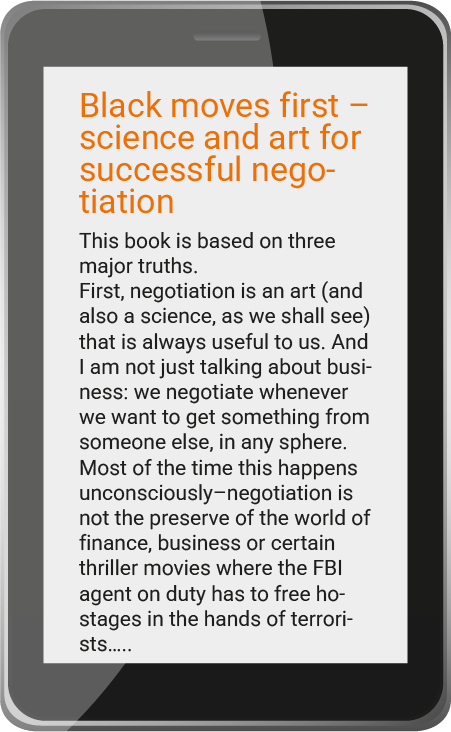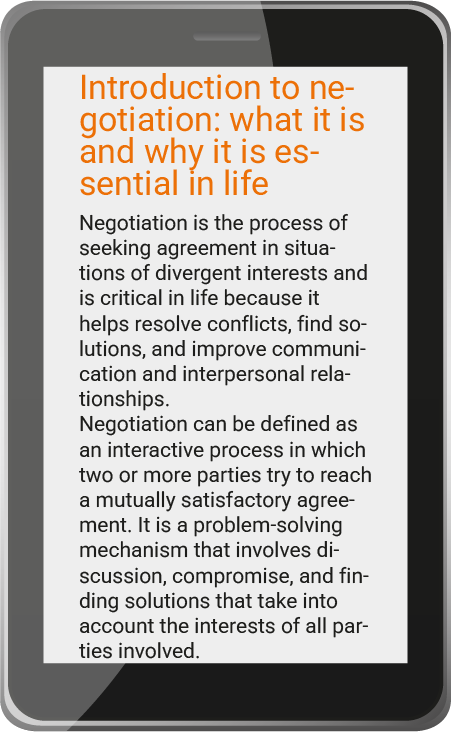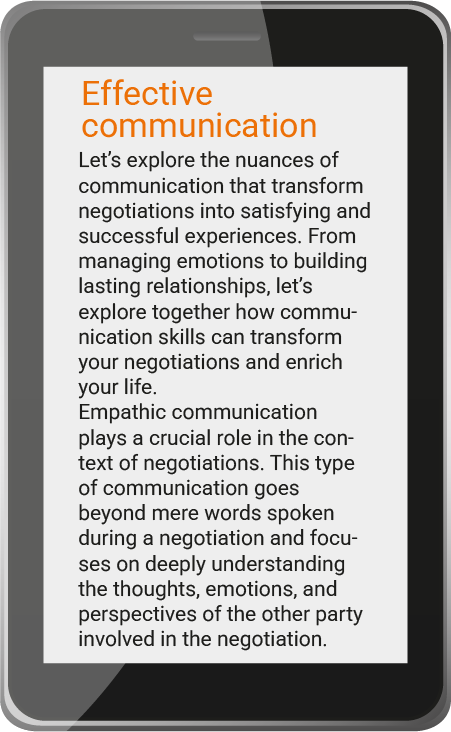Negotiation is a vital element in any business transaction, an intricate ballet of persuasion and demands/concessions that defines the success of a deal. Beyond the numbers and the subject of the exchange, negotiation represents the essence of business relationships, where the ability to find satisfactory agreements is at the heart of business operations for products and services.
In the business world, competition is fierce and consumers are increasingly informed and demanding. In this context, price and discount negotiation plays a crucial role. By enabling companies to adapt to different needs and changing market conditions, the ability to negotiate competitive prices and offer strategic discounts can make the difference between success and failure.
However, negotiating prices and discounts should not be seen only as a battle for maximum profit. It is equally crucial to strike a delicate balance between business profitability and customer satisfaction. Fair negotiation, based on transparency and mutual trust, not only creates lasting bonds with customers but also ensures a solid corporate reputation in the long term.
The first key step in preparing for negotiation is thorough research.
Companies must have a detailed knowledge of market prices and discount levels charged in their industry. This research provides a solid basis for determining which bids are competitive and realistic. Monitoring market trends, studying competitors’ strategies, and understanding how prices vary based on other variables are essential steps in establishing competitive prices and discounts.
In addition to understanding the market, it is vital to carefully analyze the customer’s needs.
What is the customer looking for? What are his or her expectations in terms of price and discount?
This deep understanding of the customer’s needs makes it possible to tailor offers, making them more attractive and persuasive. At the same time, the company must establish an acceptable profit margin. This margin must cover operating costs, ensure sustainable profitability, and allow room for discounts without compromising the company’s financial health.
Trading strategies should be based on hard data, verifiable information, and clear objectives. Using information gathered from market research and customer needs analysis, the company can develop targeted negotiation plans. These plans should include specific goals for pricing and discounts, as well as tactics for addressing any customer objections. The goal is to create a flexible but well-structured framework that allows the company to adapt to different negotiating situations without losing sight of its profit margin and customer satisfaction.
Communication is the fundamental pillar of any effective negotiation, and a clear and assertive communicator expresses his or her views unequivocally and assertively. This involves the use of direct but respectful language that leaves little room for misunderstanding. Clarity in communication establishes solid ground for negotiation, reducing the chances of misunderstandings and misinterpretations, and helping to create an atmosphere of mutual trust.
Active listening one of the most important skills in a negotiation. It involves not only hearing what the client is saying, but also understanding the client’s needs, concerns, and even emotions. Through active listening, it is possible to pick up nuances in the customer’s language, recognize his or her unspoken desires, and show genuine interest in meeting his or her needs. This empathy helps establish a meaningful bond between the company and the customer, providing a solid foundation for the final agreement.
A well-constructed value proposition is a key element in price and discount negotiations. This proposition should highlight the unique benefits of the product or service offered by the company. It goes beyond the mere enumeration of features, focusing on the solutions that the offering can provide to the customer. The value proposition should clearly demonstrate why the proposed price and discount are justified, providing the customer with a clear view of the value they are getting in return for their investment.
Customer objections are inevitable during a negotiation. However, these objections should not be viewed as insurmountable obstacles, but as opportunities to clarify the client’s concerns. Professional handling of objections requires empathy, understanding, and patience. It is important to listen carefully to the objection, confirm understanding, and then respond in detail, providing sound reasoning and hard data. Addressing objections with conviction and professionalism can often turn them into opportunities to strengthen customer confidence and close the deal.
Discounts represent have positive and negative elements: on the one hand, they can attract new customers and increase sales, but on the other hand, if applied indiscriminately, they can significantly erode the profit margin. Therefore, it is essential to conduct a thorough analysis of the financial impacts of rebates on business revenue. This involves not only calculating the direct impact on receipts, but also assessing the long-term implications, such as loss of perceived value of the product or service. Such an analysis enables the establishment of sustainable limits for rebates and maintains a balance between customer attraction and the financial health of the company.
Rebates can be powerful tools for promoting customer loyalty. However, the key lies in implementing targeted rebates that reward customer loyalty and encourage desirable behaviors. For example, loyalty discount programs based on repeat purchases or participation in membership programs can encourage customers to return and remain loyal to the company over the long term. These discounts should be structured to ensure that customer loyalty is rewarded without unduly compromising corporate profits.
Discount management must be accompanied by clear limits and conditions to avoid financial losses. Defining specific criteria for the application of discounts, such as minimum purchase amounts or limited validity periods, can prevent excessive use of discounts. Similarly, setting percentage or quantity limits on discounts can protect the profit margin. It is crucial to transparently communicate these limitations to customers to avoid misunderstandings and conflicts. In addition, constantly monitoring the effectiveness of discounts and adjusting them based on performance can ensure that bids are always in line with the company’s financial goals.
The art of negotiation is an evolving skill, enriched by targeted strategies, active listening, and deep understanding of customer needs. In light of this, it is necessary to apply the tactics and strategies discussed in their business context. Implementing strategic negotiation requires practice, patience, and an open mind. Experimenting with clear communication techniques, learning from active listening and creating meaningful value propositions can lead to tangible results.Negotiating prices and discounts is a journey that requires dedication and deep understanding. Through careful preparation, the use of targeted tactics and judicious discount management, companies can create meaningful connections with customers and realize sustainable profits. Our invitation is to embrace the art of negotiation as an opportunity for continued growth. With practice and determination, every negotiation can become an opportunity to build not just a deal, but a lasting relationship based on mutual trust and customer satisfaction.



